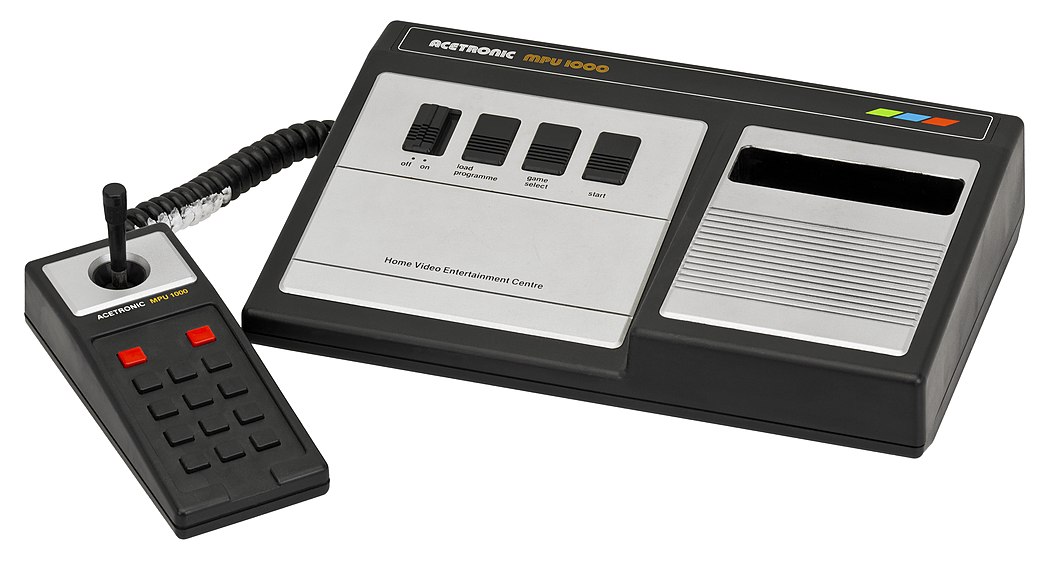History of video games/Platforms/1292 Advanced Programmable Video System
-
The Acetronic MPU 1000, one of the many consoles based on the 1292 Advanced Programmable Video System
History edit
The 1292 Advanced Video Programmable Video System was released in either 1976 or 1978.[1][2]
Technology edit
The 1292 Advanced Programmable Video System is powered by an 8-bit Signetics 2650AI processor[1][2] clocked at about 887kHz.
A Signetics 2636N Programmable Video Interface (PVI) chip clocked at 3.58 megahertz[3] is used for graphics, capable of rendering four sprites,[2][1] a background grid and four score digits. By programming in real-time during each scan of the TV picture, the sprites may be reprogrammed further down the screen. Similarly, score digits may be displayed at both the top and bottom of the screen. All video is generated from 113 registers in the PVI. As such, there is no video RAM in this system. The PVI also provides the programmer with 37 bytes of scratch memory that maybe used for variables.[4] A few games cartridges for these consoles such as chess included an extra 1kB of RAM.
Games edit
Two games were specific to the Voltmace Database.[5]
System Gallery edit
External Resources edit
- IGDB - 1292 Advanced Programmable Video System page with history and specs.
- Video Game Console Library - Page with history, specs, and photos of variants.
References edit
- ↑ a b c "1292 Advanced Programmable Video System - Audiosonic PP-1292 Advanced Programmable Video System". www.igdb.com. Retrieved 16 November 2020.
- ↑ a b c "Video Game Console Library". Video Game Console Library. Retrieved 16 November 2020.
- ↑ "1292 Advanced Programmable Video System Console Information". Console Database. Retrieved 2 December 2020.
- ↑ "Signetics Programmable Video Interface (PVI) 2636" (PDF). Retrieved 21 October 2021.
- ↑ "Videomaster / Voltmace Database Games-Computer (1980 - early 1980s)". Museum of Obsolete Media. 29 January 2015. https://obsoletemedia.org/voltmace-database-games-computer/.
